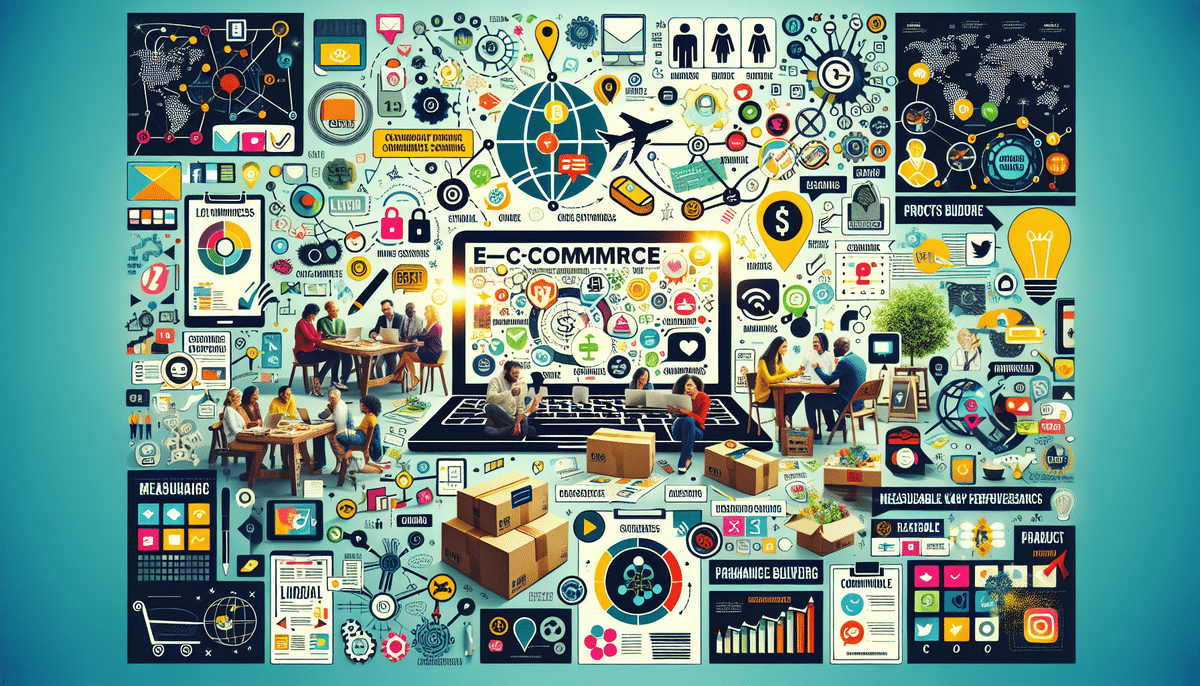Why Innovation is Essential for Scaling Your Ecommerce Business
As your ecommerce business scales, entering new markets, expanding your customer base, and diversifying your product or service offerings are inevitable. This growth heightens competition, making continuous innovation crucial to maintain a competitive edge. Innovation differentiates your brand by introducing new solutions, enhancing existing products, and discovering new revenue streams. Without it, your business risks stagnation, allowing competitors to surpass you.
Moreover, innovation enables you to adapt to evolving customer needs and preferences. Staying abreast of the latest trends and technologies allows you to offer fresh and engaging experiences that foster customer loyalty. Additionally, innovative practices can streamline operations, reduce costs, and boost efficiency, contributing to higher profits and a robust bottom line essential for long-term success in the ecommerce landscape.
Challenges of Innovating During Ecommerce Scaling
Balancing Growth and Innovation
Scaling often brings the pressure to maintain existing products or services while developing new ones. Balancing short-term operational goals with long-term innovation objectives can create internal tensions.
Resource Constraints
As your business grows, the demand for resources—be it time, money, or talent—increases. Limited resources can hinder your ability to invest in innovative projects.
Competitive Pressure
Expanding your business can attract new competitors and encourage existing ones to emulate your successes, making differentiation through innovation more challenging.
Adapting to Customer Evolution
A growing customer base often comes with diverse and changing needs. Keeping up with these changes requires a deep understanding of customer behavior and the agility to pivot accordingly.
Fostering a Culture of Innovation
Empowering Your Team
Create an environment where your team feels empowered to take risks, experiment with new ideas, and learn from failures. Encouraging open communication and feedback is essential for fostering innovation.
Collaboration and Teamwork
Promote collaboration by encouraging team members to share their expertise and work together on projects. This collective effort can lead to the generation of groundbreaking ideas.
Continuous Learning and Development
Invest in regular training and development opportunities to ensure your team stays updated on the latest technologies and industry trends.
Recognition and Rewards
Celebrate successes and recognize individual and team contributions to build a positive and supportive innovative culture.
Leveraging Data for Ecommerce Innovation
Personalizing Customer Experiences
Utilize customer data to create personalized product recommendations, targeted marketing campaigns, and customized promotions. Personalization can significantly enhance customer loyalty and drive repeat business.
Data-Driven Decision Making
Analyze customer behavior and preferences to identify pain points and opportunities for improvement. Data-driven insights enable you to develop solutions that effectively address customer needs.
Optimizing Operations
Implement data analysis and management tools to streamline operations, reduce costs, and improve overall efficiency, contributing to sustained growth.
Overcoming Roadblocks to Innovation
Resource Allocation
Prioritize innovation in your budget planning and allocate necessary resources to achieve your innovation goals. This may involve investing in new technologies or hiring specialized talent.
Time Management
Set specific goals and deadlines for innovation projects, and dedicate regular time slots to focus on these initiatives, ensuring they receive the attention they need.
Building Expertise
Invest in training for your team or partner with industry experts to bridge knowledge gaps and enhance your innovation capabilities.
Gathering Customer Feedback
Implement mechanisms such as surveys, focus groups, and social media listening to collect and incorporate customer feedback into your innovation strategy.
Developing an Effective Innovation Strategy
Aligning with Business Goals
Ensure your innovation strategy aligns with your overall business objectives. Define specific goals, metrics, timelines, and allocate resources accordingly.
Involving Your Team
Engage your team in the strategy development process to foster ownership and encourage the sharing of diverse ideas and insights.
Staying Informed on Industry Trends
Attend industry conferences, read relevant publications, and network with professionals to stay updated on emerging trends and opportunities that can inform your strategy.
Flexibility and Adaptability
Create a strategy that is flexible enough to pivot in response to changing market conditions and new information.
Incorporating Technology in Ecommerce Innovation
Automation and Efficiency
Adopt technologies that automate routine tasks, allowing your team to focus on strategic and innovative initiatives.
Advanced Analytics
Leverage artificial intelligence and machine learning to gain deeper insights into customer behavior, enabling more effective product development and marketing strategies.
Enhancing Customer Experience
Implement technologies that offer personalized and seamless customer experiences, such as chatbots, augmented reality, and advanced search functionalities.
Measuring Innovation Success
Defining Key Metrics
Establish clear metrics to evaluate the success of your innovation efforts, such as revenue growth, customer satisfaction, employee engagement, and the number of new ideas generated.
Regular Evaluation
Conduct periodic assessments to determine the effectiveness of your innovation strategies, identify areas for improvement, and make necessary adjustments.
Continuous Improvement
Use the insights gained from your metrics to refine your innovation processes, ensuring they remain aligned with your business goals and market demands.
Case Studies: Successful Ecommerce Innovation
Amazon
Amazon continuously innovates through technologies like artificial intelligence, optimizing logistics, and expanding its product offerings to maintain its market leadership.
Zappos
Zappos emphasizes exceptional customer service and a strong company culture, which drives ongoing innovation in their customer experience strategies.
Warby Parker
Warby Parker disrupts the eyewear industry with its direct-to-consumer model, virtual try-ons, and innovative marketing strategies.
Studying these companies provides valuable lessons on leveraging customer feedback, data analytics, and technology to drive sustained innovation and growth.
Balancing Short-term and Long-term Innovation Goals
Short-term Innovation
Focus on enhancing existing products or services, optimizing current operations, and testing new products in the market to achieve immediate improvements and customer satisfaction.
Long-term Innovation
Invest in developing new technologies, exploring untapped markets, and creating digital platforms that position your business for future growth and industry leadership.
Strategic Planning
Carefully plan and prioritize your innovation initiatives, ensuring a balanced approach that addresses both immediate needs and future opportunities.
Building a Sustainable, Innovative Future
Maintaining continuous innovation is pivotal for the enduring success of your ecommerce business. By fostering a culture that encourages creativity, leveraging data-driven insights, and strategically balancing short-term and long-term goals, you can stay ahead of the competition and consistently deliver value to your customers. Investing in innovation not only supports current growth but also lays the foundation for a resilient and forward-thinking ecommerce enterprise that can navigate both present and future challenges.




















